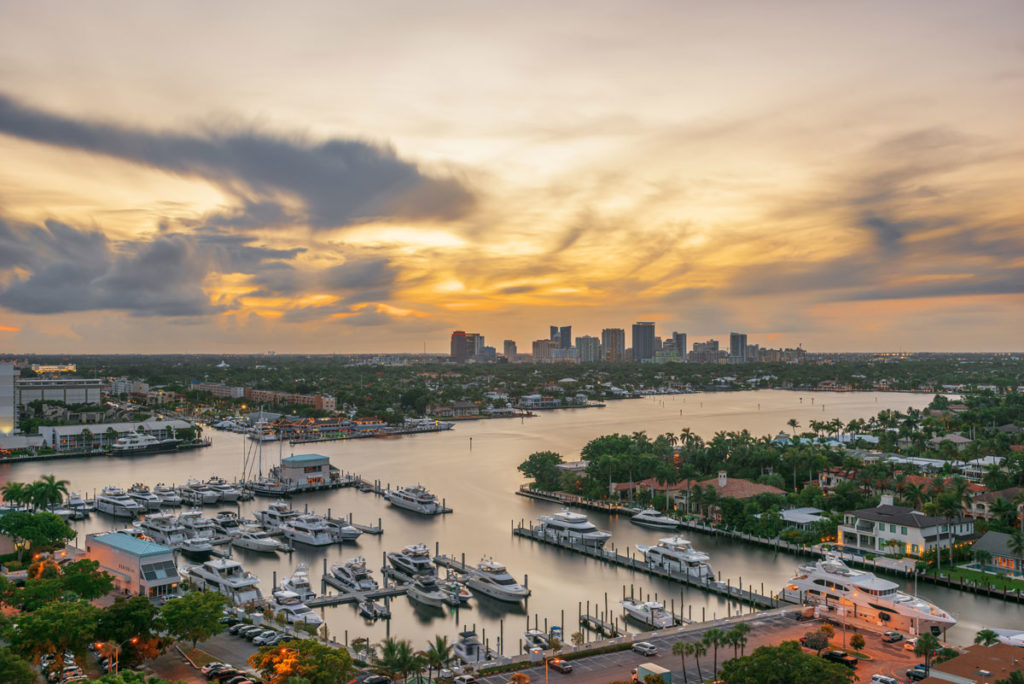Fort Lauderdale, often referred to as the “Venice of America,” is a vibrant city located in Broward County, Florida. With a rich history and a unique network of canals, Fort Lauderdale offers a blend of cultural attractions, natural beauty, and a relaxed coastal lifestyle that entices visitors from around the world.

The history of Fort Lauderdale dates back to the early 19th century when the area was inhabited by the Seminole Native American tribe. In 1838, Major William Lauderdale led a detachment of soldiers during the Second Seminole War and established a fort on the New River, which eventually became the namesake of the city.
During the late 19th century, Fort Lauderdale began to flourish as a center for trade and commerce. The Florida East Coast Railway, completed in 1896, brought an influx of settlers and facilitated the transportation of goods. The city’s economy grew rapidly with the development of agriculture, particularly the cultivation of citrus fruits.
In the early 20th century, Fort Lauderdale experienced a surge in tourism as visitors discovered its pristine beaches and idyllic climate. The city’s reputation as a winter retreat for wealthy northerners earned it the nickname “the Venice of America” due to its extensive canal system. The original canals were dug in the 1920s as a way to drain the swampy land, but they soon became a defining feature of the city’s landscape.
Today, Fort Lauderdale boasts over 165 miles of navigable waterways, making it the city with the most canals in the United States. These waterways meander through neighborhoods, lined with beautiful waterfront homes, luxury yachts, and picturesque bridges. The Intracoastal Waterway runs parallel to the Atlantic Ocean, offering stunning views and opportunities for boating, kayaking, and paddleboarding.
The canals of Fort Lauderdale provide a unique way to explore the city and its surroundings. Visitors can take leisurely boat tours or rent their own vessels to cruise through the canals, witnessing the grandeur of the waterfront estates and enjoying the tranquil ambiance. It’s a captivating experience that allows visitors to immerse themselves in the city’s maritime heritage.
Beyond its canals, Fort Lauderdale offers a wealth of attractions that make it a must-visit destination. The city is renowned for its pristine beaches, including the iconic Fort Lauderdale Beach, where visitors can bask in the sun, swim in the crystal-clear waters, and partake in water sports.
Fort Lauderdale is also home to a vibrant arts and culture scene. Las Olas Boulevard, lined with boutiques, art galleries, and restaurants, is a hub for shopping and dining. The city’s museums, such as the NSU Art Museum Fort Lauderdale and the Bonnet House Museum & Gardens, showcase a diverse range of artistic and historical exhibits.
Nature enthusiasts will find plenty to explore in Fort Lauderdale as well. The Everglades, a UNESCO World Heritage site and one of the most unique ecosystems in the world, is just a short drive away. Visitors can embark on airboat tours to observe the abundant wildlife, including alligators, birds, and tropical vegetation.
In conclusion, Fort Lauderdale’s history, with its roots in the Seminole Wars and the subsequent development of trade and tourism, has shaped it into a captivating city with a remarkable canal system. The abundance of canals and waterways offers visitors an unparalleled opportunity to immerse themselves in the city’s maritime culture and explore its scenic beauty. Combined with its stunning beaches, vibrant arts scene, and proximity to natural wonders like the Everglades, Fort Lauderdale is a destination that promises a memorable experience for all who visit.
